#Isometry in Games
Explore tagged Tumblr posts
Text
just imagine the Hades game, but with egyptian mythology.
for me it seems like Seth trying to escape from Osiris in the first part and in the second him trying to return, after he killed Osiris by himself.
and it is all on those amazing isometry, Seth can change him's weapon every round because he god of war and sand, in the second part he can only defend himself with weapon, which he finds on the adventure. instead Thanatos would be Horus, but sometimes another gods. Maybe he even could get blessed from a few gods in the second part.
17 notes
·
View notes
Text
Mastering Isometric & Isomorphic Game Design: A Quickstart Guide to Unlocking 3D Potential in 2D Worlds
We say that: “oh I love that Baldur Gate, let’s crack out an isometric.” Or, “oh, digging this Final Fantasy Tactics stuff, let’s do that sideways angle thing.” But what does that mean? Let’s break it down mathematical. T:(X,∥⋅∥X)→(Y,∥⋅∥Y) is a isometric isomorphism if it is a linear isomorphism, and it is an isometry, that is ∥T(x)∥Y=∥x∥X∀x∈X; T:(X,∥⋅∥X)→(Y,∥⋅∥Y) is a topological…
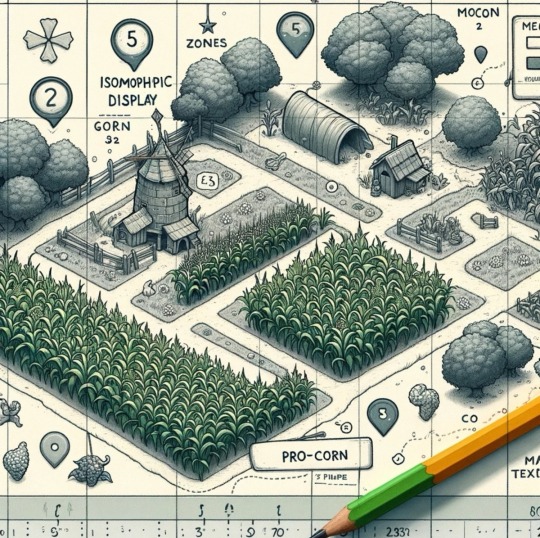
View On WordPress
#2D Game Development#3D Game Aesthetics#Bijective Transformations#Game Design Innovation#game design lessons#Game Design Principles#Game Design Strategies#Game Design Tutorials#game designer#Game Development Blog#Game Development Techniques#Game Environment Design#Game Graphics Design#Game Mechanics#game studies#Game World Consistency#game writer#game writing#indie game dev#Isometric Art Style#Isometric Game Community#Isometric Game Design#Isometric Game Engines#Isometric Game Tutorials#Isometric Graphics#Isometric Indie Games#Isometric View#Isometric vs. Isomorphic#Isometry in Games#Isomorphic Maps
12 notes
·
View notes
Text
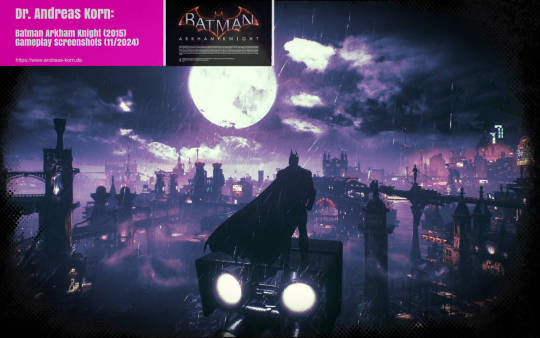
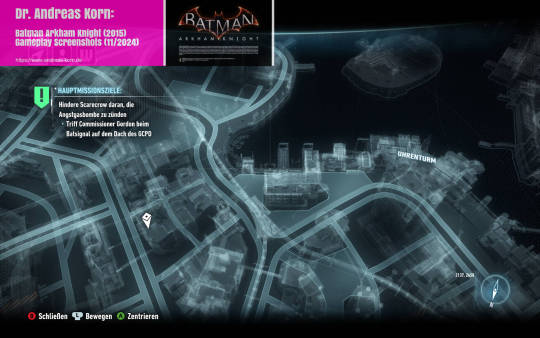
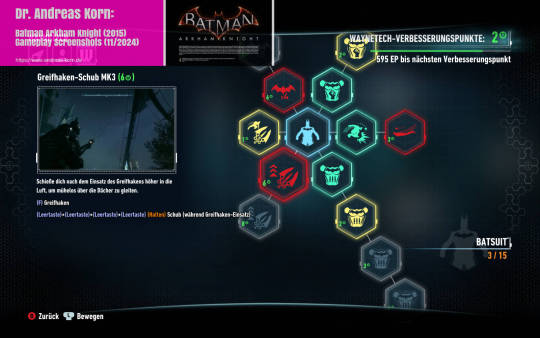
Batman Arkham Knight
Ein Beitrag zur Game History oder zur Geschichte des Computerspiels.
Kurzanmerkungen: Zwei Tage im Test (10 Std. Gameplay)
Schleppender Anfang
Keine vernünftige Anleitung, wie man das Kampfsystem, den Batman-Flug und das Bat-Mobil perfekt steuert
Teilmissionen kann ich nicht starten (Rette die Feuerwehrleute)
Hauptmissionen müssen mit den Questketten „linear“ abgearbeitet werden; aus meiner Sicht kommen viel zu wenig „Waynetech-Verbesserungspunkte“ als Gratifikationen auf; ich habe bislang nur eine Bat-Suit Verstärkung freigeschaltet und den „Bat-Flug“ (mit RB Katapultierung, dann Greifhaken-Schub MK3) allerdings mit 6 Waynetech-Verbesserungspunkten freigeschaltet; jetzt habe ich keine mehr (nach 7% Fortschritt); ich habe also immer noch Standard Starteinstellung vom Batmobil und von fast allen Bat Einstellungen; das finde ich extrem unmotivierend
Positiv: Die 3D Welt von oben sieht gang schön aus
Der Third-Person-View von Batman ist mir etwas zu nah
Das Interface der Karte gefällt mir gar nicht; der Cursor ist viel zu klein, um Spots zu markieren; auch ist die eingeschränkte Isometrie völlig sinnlos
Handlungslogik: manchmal stand ich vor Situationen, wo mir unklar war, wie ich weiter kommen kann

Die Steuerung des Batmobils ist grausam; umschalten in den Kampfmodus reduziert die Bewegungsfähigkeit; problematisch, da man in vielen Situationen sehr schnell handeln muß (Ziel korrekt anvisieren, richtige Taste für Waffeneinsatz, ggf. schnelles Umschalten in die „normale“ Vorwärtsbewegung) Kurzfazit Ich wundere mich, dass dies Game (PC release 2015) so viel Zuspruch gefunden hat und meines Erachtens viel zu gut bewertet wurde. Für meine Erwartungen mangelt es am Interface und Interaktionssystem (Steuerung), am fehlenden „Stealth Guiding“ oder direkten Hilfen, welche Funktionen „neu“ erlernt werden müssen, um den Anforderungen gegenüber zu bestehen. Der virtuelle Raum sieht zwar ganz gut aus, aber im Gameplay zeigen sich einige Stolpersteine. Das Spiel gerät immer wieder ins Stocken. Mir fehlt der Fun und meine Frustrationsresistenz schon angegriffen. Es hätte besser sein können, so bleibt mir noch unklar, ob ich mich weiter damit beschäftigen möchte. Im Vergleich dazu ist "Spiderman Remastered" vorbildlich konzipiert und im Potential der Interaktivität sehr gut umgesetzt. Spiderman ist um Längen besser und liegt in einer anderen Liga der erfolgreichen Computerspiele.
Dr. Andreas Korn, 03.11.2024
[Nachtrag 04.11.24: ich habe das Game deinstalliert; primärer Grund ist die aus meiner Sicht sehr unbefriedigende Steuerung]
+ + +
0 notes
Text
やりたいからやってるんだ
Mô tả và phân loại trò chơi
Target group: Single player, for everyone
Game genre: Puzzle game
Visual perception
Different architectural landscapes/stairs that can be rotated, flipped, moved by handles
Color changes, bumps resembling the connectors on lego bricks
Categorization: Educational
Precision/motor skills: players must shift, rotate, flip things, change perspective with an accurate and concise touch
Applying concepts/rules: of perception, isometry and optical illusions
Decision making (strategy, problem solving): where to go, what to rotate.
Visually appealing, Optical illusions, Perspectives
Stimulates the brain and concentration, learn how to see things from a different angle.
- Thông điệp rõ ràng về sức khỏe tinh thần của các trò chơi thu hút sự quan tâm của thanh thiếu niên có triệu chứng tâm lý. Nhóm này có xu hướng lựa chọn game được quảng cáo là tốt cho tinh thần nhiều hơn khi game được quảng cáo chỉ tập trung vào yếu tố giải trí (nghiên cứu với hai trailers khác nhau của game Monument Valley).
- Trải nghiệm chơi game không bị ảnh hưởng bởi thông điệp quảng cáo.
- Sự chủ động trong việc tìm kiếm những giải pháp cải thiện sức khoẻ tinh thần của bản thân sẽ ít nhiều đem lại kết quả tích cực cho mỗi cá nhân.
- Gợi ý về việc bổ sung yếu tố có lợi cho tinh thần và cho hoạt động chánh niệm của người chơi trong các chiến dịch quảng cáo.
- Chơi monument valley còn khuyến khích khám phá sự kì diệu của toán học và vẻ đẹp của nó :D
Trò giải đố Monument Valley đưa người chơi vào một thế giới ảo ảnh quang học với đồ hoạ đẹp đẽ, âm thanh hấp dẫn. Game cho một người chơi, không giới hạn tuổi và có thể xếp loại Educational vì đòi hỏi các kỹ năng vận động chính xác của người chơi khi họ phải chuyển, xoay, lật các objects trong game, ngoài ra người chơi còn được áp dụng các khái niệm nhận thức, tri giác về hình học, được kích hoat trí tưởng tượng không gian và học cách quan sát với những góc nhìn khác nhau . Xuyên suốt quá trình chơi game, các quá trình ra quyết định được hình thành và thực hiện để giải quyết các level: người chơi phải nghĩ xem nên đi đâu, nên xoay object nào để qua bàn.
Đã có nghiên cứu chỉ ra lợi ích của những loại game kiểu Monument Valley trong quá trình học tập chánh niệm.
0 notes
Text
Isometric Games: Ways of Deep Dive into a Unique Perspective
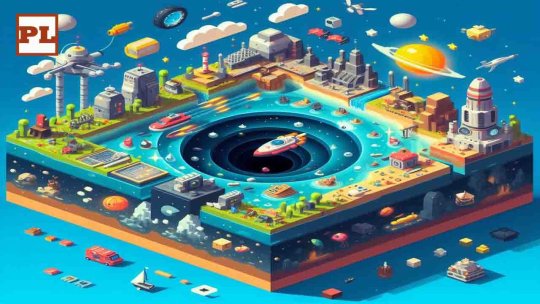
Isometric Techniques
Isometric video games are a great way to explore different worlds and characters. They are also great for creating puzzles that require spatial awareness. In addition, they are great for incorporating combat systems that exploit the unique perspective of isometric gaming.

Isometric Techniques The first step in creating an isometric game is to design sprites and tiles. Using a grid is important for maintaining accuracy and visual consistency.
Isometric video game graphics
In video game graphics, isometric mapping techniques offer the visual appeal and depth of 3D worlds with the technical simplicity and control of 2D frameworks. This is especially important for games that require players to interact with detailed environments and objects, like RPGs or puzzles. It also helps to create realistic characters and environments. These features can enhance a player’s experience and make games more compelling to play.

Isometric video game graphics Unlike 3D polygonal games, isometric video games use parallel projection, which is more efficient for processing large game areas. This is because the computer doesn’t have to calculate a 3D perspective distortion for each object. The parallel projection also allows for more accurate pixel alignment. However, it is important to note that this style of graphics does not allow for true parallax scrolling, which is the ability for a character or object to move independently from the camera view. Although modern gaming hardware can handle high-resolution 3D models, many gamers prefer the simpler look and feel of isometric graphics. Isometric games also tend to age better than their 3D counterparts and have lower hardware requirements. Moreover, they often have better gameplay mechanics that leverage the unique isometric perspective and distinct viewpoint. Modern isometric games have a wide range of genres and styles, from epic fantasy adventures to gritty post-apocalyptic worlds. Some even combine isometric and 3D graphics, such as Moon Studio’s Metroidvania games Ori and the Blind Forest and Ori and the Will of the Wisps. In addition, isometric games can be surprisingly fun and challenging to play. Designing isometric video games requires a thorough understanding of the principles of isometry, including the 45-degree angle and the concept of perspective. The designer should also know how to create a grid system for accurate asset placement and how to show depth by stacking objects vertically. Finally, he or she must pay attention to color and pixel density for a harmonious and consistent look. Once the graphical assets are designed, the programmer can begin to build the game. This includes writing code for the core game engine and handling collision detection, movement, physics, and other game functions. The developer should also test the game to ensure it runs smoothly on different platforms and devices.
Isometric art
Isometric art is a popular way to make flat designs pop. It’s used by graphic designers and illustrators for everything from architectural outlines to interior design plans. It can also be found in comics, video game art, and infographics. In addition to its use in these genres, isometric art can also be used to add depth and emphasis to app and website graphics. The isometric drawing technique uses a parallel projection to display multiple facets of an object at the same time. In contrast to the one-point perspective, in which parallel lines converge toward a point that allows us to perceive depth, isometric drawings keep all the lines equally foreshortened. This method of rendering helps to eliminate focal points and focus attention equitably on all dimensions. Novice artists can easily create simple isometric illustrations using shapes and geometry. They can also combine different shapes to create more elaborate, three-dimensional drawings. They can even add color to their work for a more professional look. Some designers create isometric graphics by hand, while others use digital tools like Adobe Illustrator. This type of illustration is a modern variant of an ancient Chinese art form known as axonometric. The axonometric style of drawing is similar to the isometric style, but it includes a more realistic perspective. This design approach is popular among many designers because it provides a more natural representation of 3D objects. It also helps them achieve more accurate lines because it uses ideal measurement proportions. It is a great choice for architects, engineers, and real estate developers, as it allows them to plan the layout of buildings and spaces without having to construct physical models. Isometric drawing is also a good choice for artists who want to create detailed drawings of complex objects. This technique is often employed in computer-aided engineering (CAD) software programs. It can be used to create detailed drawings of complex objects, including mechanical components and electrical wiring systems. Isometric artwork is easy to create and is a great alternative to traditional 2D drawings. It is especially suitable for artists who want to convey the depth of space without adding unnecessary details. Isometric artwork is also useful in the metaverse, where it is used to depict NFT buildings and other objects.
Isometric architecture
Isometric architecture is a type of architectural design where a parallel projection is applied. This projection angles the view to display parts of the environment that wouldn’t be visible from a strictly top-down or side view, thus creating a three-dimensional (3D) effect. This is an important technique for architects because it allows them to make clearer, more accurate drawings of structures and buildings. Moreover, it also helps them to convey the details of their work more clearly.
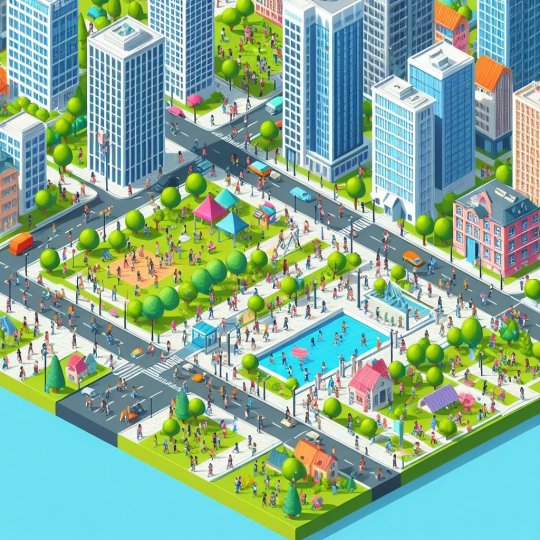
Isometric art Unlike perspective drawings, isometric designs use parallel lines and are true to scale. These lines are drawn with equal lengths, which makes it easy to identify the dimensions of an object. As such, it’s an excellent tool for technical applications, such as blueprints, schematics, and engineering drawings. However, isometric drawings aren’t a perfect solution for all types of projects. For instance, they don’t accurately depict complex objects that require detailed measurements. In such cases, it would be better to use one-point perspective drawings, which mimic how the human eye perceives objects. This method makes it easier to read the dimensions of a set of spiral stairs than an isometric drawing, which would be cluttered with numbers. Video game graphics are also often drawn isometrically, especially when the characters move around the environment. This technique avoids the problems associated with perspective, including foreshortening and different camera views. MC Escher, famous for his mind-bending staircases that go nowhere, used isometric projection extensively in his artworks. Although isometric architecture is a relatively recent invention, it’s already found widespread use in the field of design and construction. This trend is expected to continue, as it provides a simple and effective way for architects to present their designs to clients. Moreover, it’s a great way for companies to showcase their products. This style of graphic design is particularly useful in the case of industrial and mechanical products, where a more precise and clear presentation is needed. Isometric designs are a natural evolution out of flat design, and they provide an interesting new texture that can add more depth to a design. These designs are used to demonstrate the intricacies of a product, and they can be helpful in communicating ideas between designers and clients.
Isometric photography
Isometric photography is a type of photo that uses a parallel projection. This projection is different from a perspective image because the lines that connect the objects are parallel. The result is that the object’s axes are equally foreshortened. The resulting images are also more accurate. However, this technique is not appropriate for all types of objects. For example, if you are shooting a person or a building, it is best to use a perspective image.
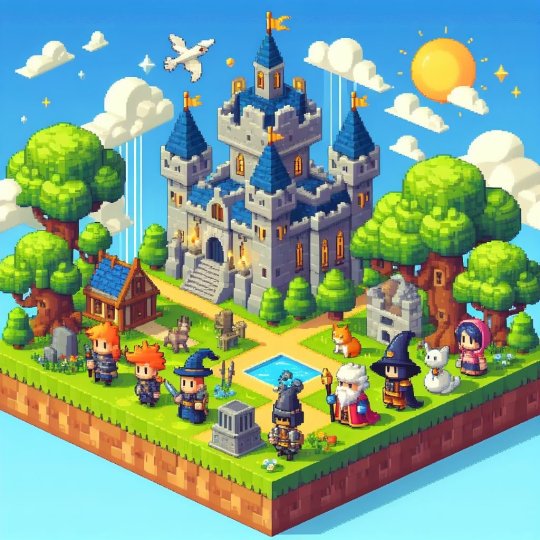
Isometric video game graphics While the isometric design is not a new trend, it has gained popularity recently because it adds depth to flat designs. It also has the advantage of allowing designers to avoid converging perspective lines. This is especially important for websites where the primary goal is to convert visitors into leads. Creating isometric art can be as simple or complex as you want it to be. You can start with a pencil sketch or create digital pixel art using image-editing software. If you’re new to isometric drawing, it’s a good idea to begin with a simple shape such as a cube. You can also draw a square grid on your paper to help you stay within the isometric dimensions.
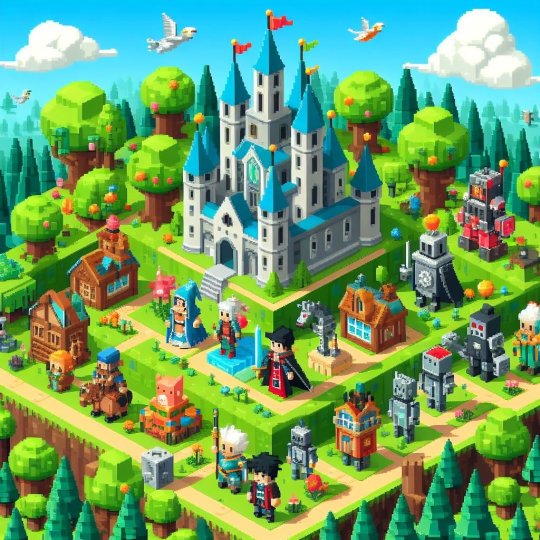
Isometric video game graphics The simplest isometric method involves a set of angles for each axis. Normally, these angles are equal, but you can use a different angle for each axis to produce a trimetric or dimetric drawing. These are more flexible, but they don’t provide true proportions. A free app called BlendCamPLite allows you to post-process your photos into isometric art. It’s designed to work with multiple layers, but it works well on its own as well. There are also apps that let you shoot isometric photos directly from your phone. Isometric designs can be used in a variety of ways, including for maps and hero images on websites. However, it’s important to understand when and how they should be used. This will help you communicate your design ideas more clearly and improve your audience’s perception of your work. A hero image is the first thing that a user sees on your website, so it’s crucial to create one that conveys the essence of your brand. Read the full article
#IsometricGames#OtherPopularGamingSubgenres#Books#Music#Vintage#Aesthetic#Quotes#Travel#Nature#Fashion#Photography#Art
0 notes
Text
abandoned (project)
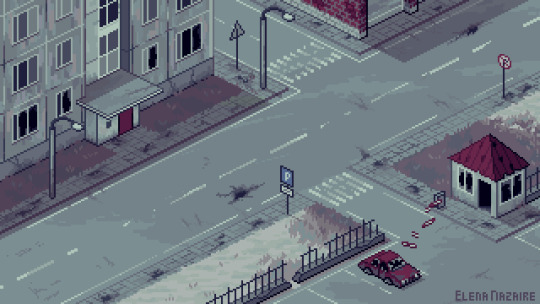
307 notes
·
View notes
Text
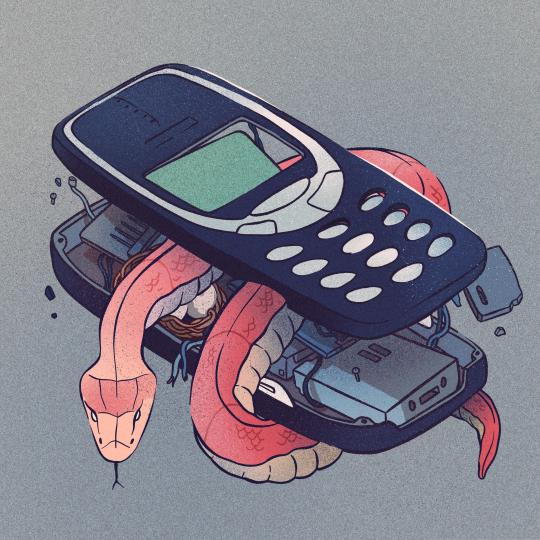
Nokia 3310 💜 What was your first phone?
👉 Patreon / Instagram / Twitter / YouTube / Discord
#digital art#illustration#drawing#draw#my art#artoftheday#artists on tumblr#art#original art#art style#artwork#procreate#digital illustration#brushes#isometric#isometric art#isometry#video games#gaming#videogames#gamer#snake#nokia
315 notes
·
View notes
Photo
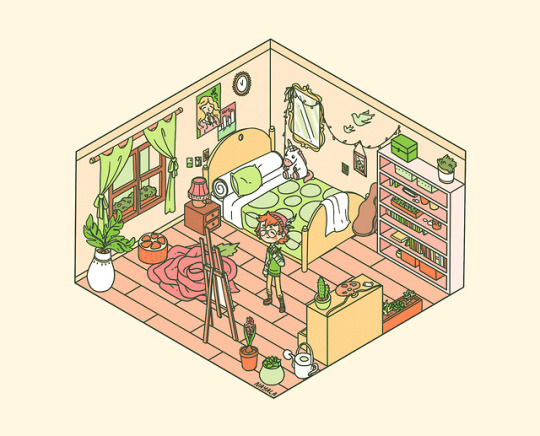
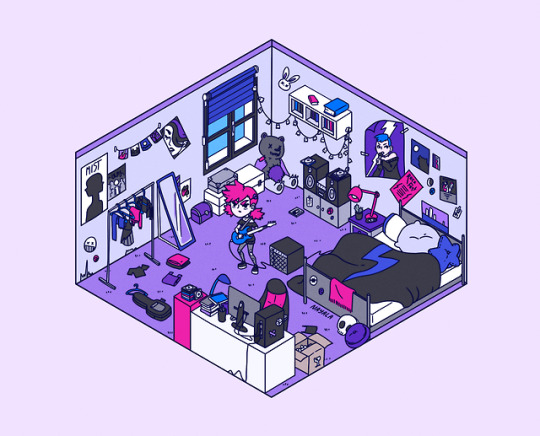
Brother & sister
I had the idea to show the opposed universes of a brother and a sister through their bedroom in isometry. Bedrooms can show a lot about personality. I made the brother rather calm, sensible. He likes plants and painting. Her sister is more impulsive and energetic, and likes punk and rock music. I tried to reflect with their attitude and their bedroom's furniture, and with the opposition of colors too (warm/cold).
#isometry#isometric#game art#bedrooms#colors#teenage#2D art#digital art#opposition#warm#cold#plants#environments and props#illustration#art#artwork#deco#rock#punk#environmentsprops
26 notes
·
View notes
Video
tumblr

Making the UI is a tedious task:
Draw a panel in photoshop -> add it to the game -> test it in-game -> place text in aprox. coordinates -> see where it appears in-game -> its nowhere near where it’s supposed to be... reposition text - > test it in-game again -> reposition again -> test in-game... looks cool! -> repeat for the buttons -> don’t like them in-game after all the work of putting them in-place, redraw buttons -> look good. on to the next panel -> repeat.
Anyways, I’m gonna sound like a noob... but I’m really proud of the current game ui. It’s a slow process and as you can see in the video, there’s still parts of the old one there (the purple and white stuff in the middle) but it’s coming along very nicely.
Oh and ignore those blue rectangles. That’s placeholder art for the loot.
What do you think?
#pixel#pixelart#pixel art#isometry#isometric#agdg#2d game#spacegame#space game#2dgame#2d games#indie#indiegame#indiegames#indie game#indie games#game dev#gamedev#game development#gamemaker#game maker#game maker: studio#game maker studio#gms#gm:s
135 notes
·
View notes
Video
youtube
The gameplay teaser is updated !
Le teaser de gameplay a été mis à jour !
#teaser#video games#jeu vidéo#indie game#puzzle platformer#isometric#isometry#isometrique#riddles#action#aventure#exploration
3 notes
·
View notes
Video
DESPERADOS 3: MONEY FOR THE VULTURES - Part 3 Trailer
0 notes
Photo

Sakate, my Watcher's Kuahi best friend from the very childhood.
17 notes
·
View notes
Photo
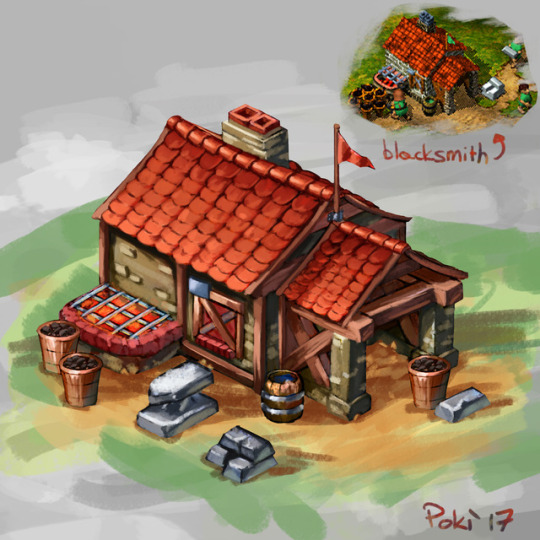
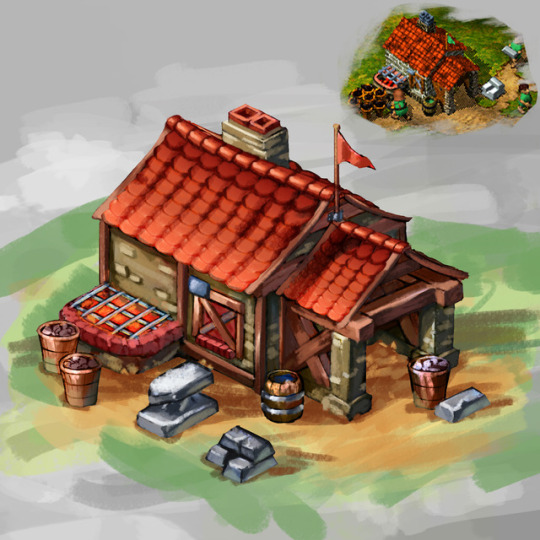
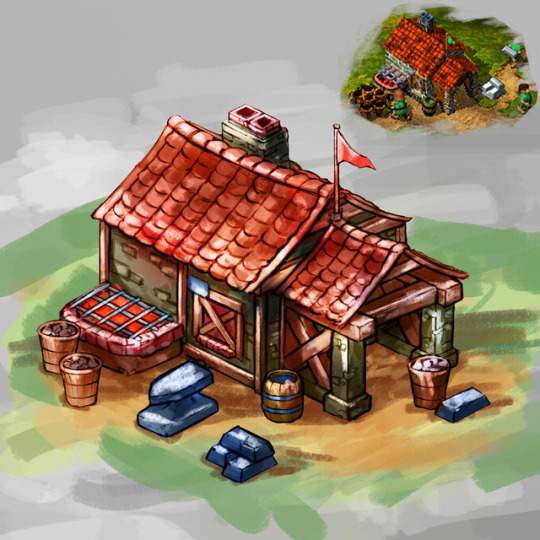
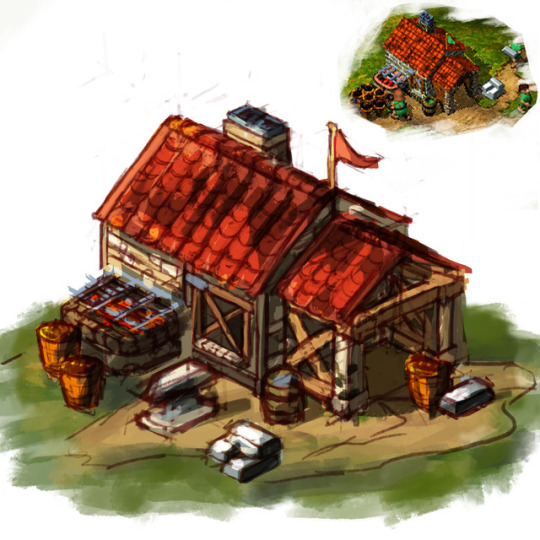
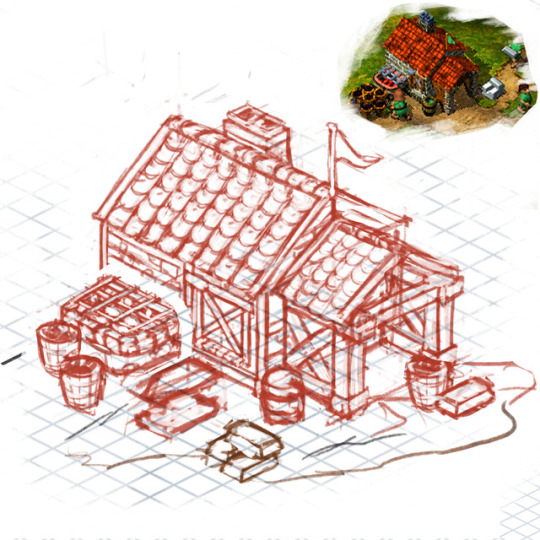
I’m s l o w l y getting back on my /drawing/ feet. I decided it’s time to fulfill my dream of drawing isometric stuff - this is a blacksmith from The Settlers 3, yeah i still play it. I can recommend youtube tutorials and studying art from Sephiroth, they’re doing awesome stuff
#my art#art#isometric art#game art#the settlers 3#isometry#isometric#concept art#isometric building#blacksmith
4 notes
·
View notes
Text
Alright! Let’s get this done!
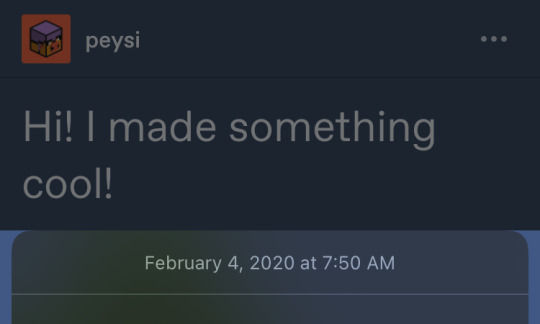
It’s less than 40 days until the one-year anniversary of my “Hi! I made something cool!” pinned post!
I’ve wanted do something like that again. I want to make another isometric render of something in Minecraft, all in a 2D image editing software, by hand.
But there’s a problem. I don’t know what to make.
I have a bunch of ideas on things I could make! But I don’t know which one to choose! And I don’t want to choose randomly, because the original isometric “render” actually took me one whole week to make. That’s seven consecutive days.
So that’s where you come in.
It’s hard and high-stakes to make one of these, so I don’t wanna mess up! I wanna know for sure what I should make.
If you could please, look through the list and see me which one(s) you’d like me to make. Then, tell me what your thoughts are in a reply or reblog. I’ll read through them, and in about 36 hours after I post this I’ll make my final decision on what I’ll render!
(You don’t need to interact with this post if you don’t want to. You can scroll past it if that’s the case.)
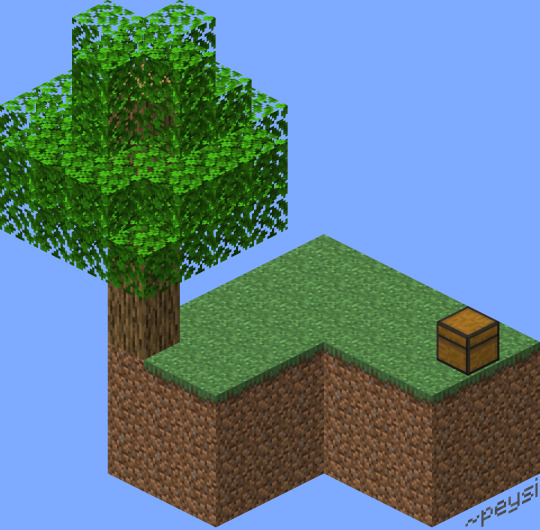
Remember, in the end, the result should be something of this caliber. This is what I made back then. And this is the level of quality I’m striving for again.
(I won’t post my render on the one-year anniversary, mind you. I’ll post it the day that I finish it, whenever that may be. I just mentioned the one-year anniversary so we’re all on the same page here.)
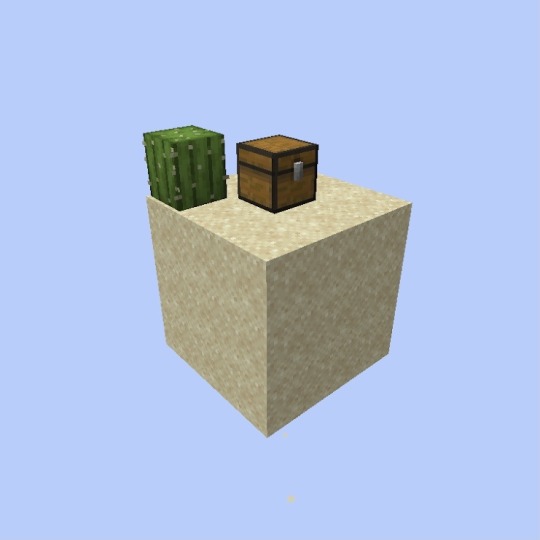
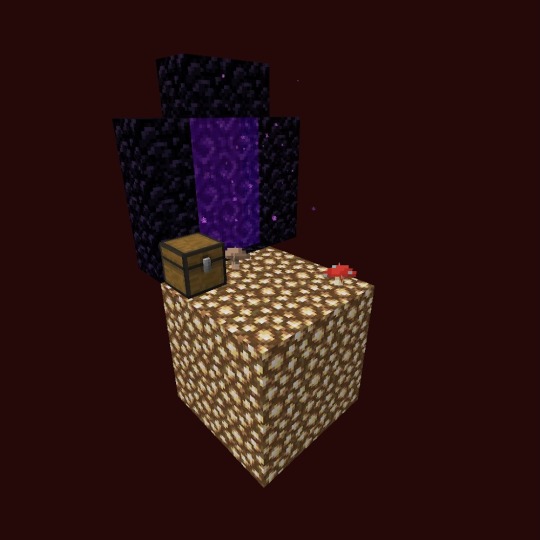
1) The other Skyblock islands
This is pretty self-explanatory. I rendered the main Skyblock island, right? Well why don’t I just render the other two and call it a day? I’m finishing the job. This is like the obligatory sequel for a hit movie.
One’s a sand island you reach once you bridge over from the main island in normal Skyblock. The other’s made of glowstone and you reach it when you build a nether portal and travel through the nether to link up with the portal on the other side.
Now, from a “making the render” standpoint, the problem with this is that it probably won’t be fun to make as the first one. Like, the other original Skyblock island at least had interesting shapes to work with, it had depth, and it posed a fun challenge. These other islands are just 3x3x3 cubes made of the same block.
Plus, people might not care to see the new render. People always like the sequel less than the original movie. And I’m thinking that might be true for something as esoteric as a post about a Minecraft render made with 2D image editing software.
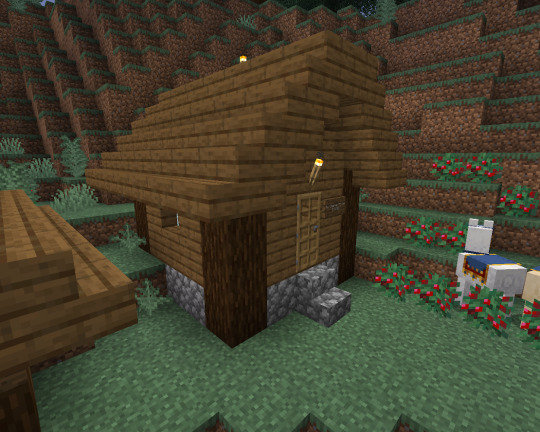
2) My Survival House
You might be confused seeing this on the list. Like, everyone’s seen or played Skyblock so that makes sense, but this? This is my singleplayer survival house. Very few have seen it; nobody but me has ever been to it. Let me explain.
I played on this world from September to October 2020. In that time, I built a starter base, a mine, and a cow barn/wheat farm. This is the starter base. It doesn’t look like much, but that’s only because we’re on the surface. Let’s go into spectator made and bring the camera under.
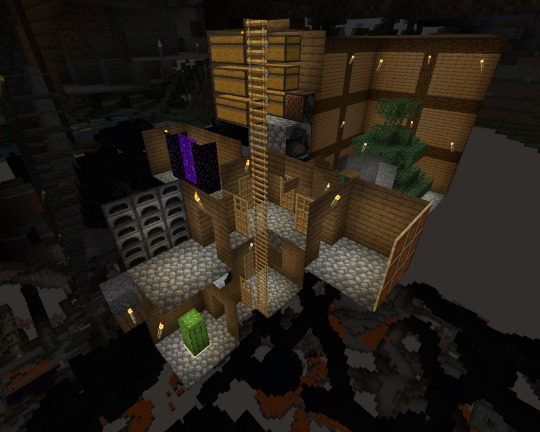
Now that’s what I’m talkin’ about!
Yes, the majority of my “starter base” is underground! (The image is slightly edited to highlight where it is.) If I were to render it, I would show the bit that’s at the top, connected to everything underground.
There’s a lot in this base! Immediately down the ladder from the house at the surface, there’s a room full of chests and that contains a jukebox where I can play music discs.
Then on the floor below that there’s my furnace room, my portal room, my map room, and my spruce tree farm. Down another floor you can find a room where I intended to grow cactus for a brief period of time.
I’ve spent a lot of time in this base. However, I’ve never seen it in full, in isometric view. And I sure would like to. Because perspective in 3D constantly hides different parts of my base when I view it from different angles. Isometry is an idealized reality.
If I were to render this, you’re agreeing that I’m doing this for myself. I love this world, and I’ve spent many days in the past excited to come back to it. This is a bit of sentimentality, a tribute to myself.
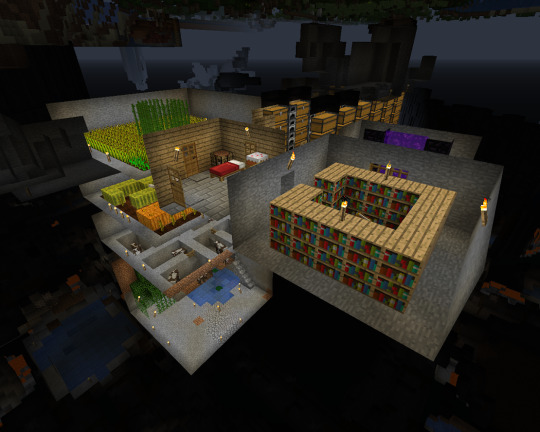
3) My 1.0.0 Survival Base
Now, you might be starting to recognize a pattern here. (Image slightly edited to highlight where the survival base is.) And no, it’s not that I really want to isometrically render my survival worlds for some reason.
Yes, I apparently like building my survival bases underground, I know, shut up >:P
I played on this world from March to September 2019: the longest I played on a survival world so far. Virtually only one other person knows about this world.
The entire time I played on it, it was in Java Edition 1.0.0: the earliest and first full release of Minecraft. I accessed the version by using the dropdown menu on the Minecraft launcher.
As a result of being in 1.0.0, the entire survival experience was changed, and that posed a lot of unique challenges. For example, how do you mine out large regions of land if beacons haven’t been created yet? How do you enchant tools if anvils aren’t in the game yet?
Playing on this 1.0.0 world has acted as my greatest insight into “old Minecraft” so far.
If I were to render this base, I would only render the underground portion (which I hollowed out of a naturally-generated cave, by the way). Why would I do that, if there’s probably also a house on the surface that I could render?
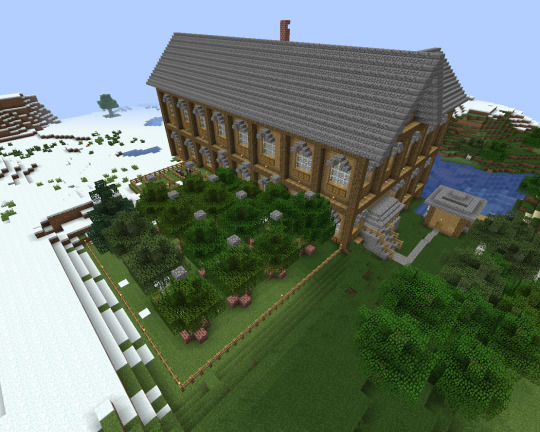
Because this is what that house looks like.
Yeah, this house does look incredible! I would know, I’m the one who made it all in 1.0.0. But no chance am I rendering all that.
Anyways, I want to render this world because despite all the time I’ve played on this world, I’ve never actually even seen my base as a spectator much like I’ve shown above. (Minecraft added cheats in 1.3.1. Spectator mode didn’t exist until 1.8.)
Plus, this faces the same perspective problems I mentioned for #2. So mainly, if I were to render this isometrically, I would be helping myself by letting me view my world in a lens I was never able to before.
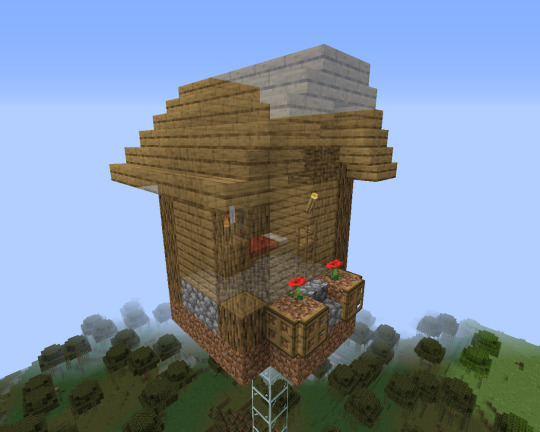
4) A House in the Sky
This is a bit of an inside joke on my blog.
Basically, ever since August, I’ve been playing games of UHC on Minecraft minigame servers like Hypixel and Mineplex with the sole purpose of defying the point of the game and just building a house in the sky. Like a whole-ass village house. Plop. Right there.
This is the house I would build in those games. And this is what I would like to render now.
If you know me personally, then you already know what the front of the house looks like. (I’ve shown it on my blog countless times.) So that’s why in this preview, I’ve made the front of the house see-through so you can see the interior.
This is an effect I want to emulate in my render (if I ever make one). I make multiple image edits, and in one of them, both the exterior and the interior of the house are visible.
If I render this, it’s just a pointless joke. Not much else besides that 🙂
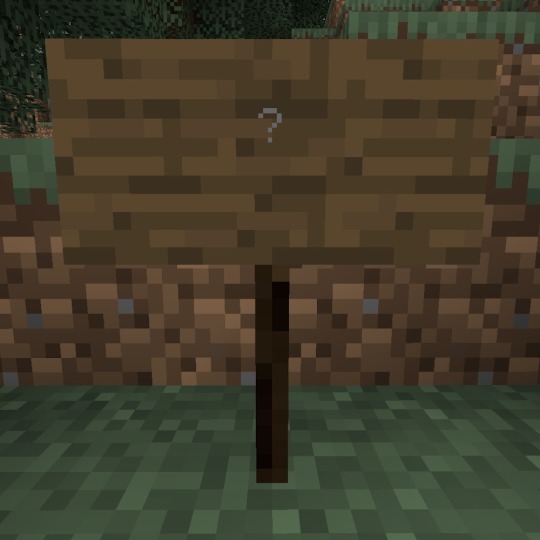
5) Something Else?
This is where I leave an open-ended answer.
Did you think of something that’s not on this list? Do you have something in mind that you’re passionate about personally, and that you’d like me to render? Do you think a couple or all of the ideas here are good, and you want me to render those couple or all of them?
Then remember to tell me in a reply or reblog!
Keep in mind when leaving your opinion that making a single render takes a lot of time and effort. Think of it this way: the original Skyblock render took one week to make.
Rendering something with half as many blocks would take four days. Rendering something with twice as many would take two weeks. Making multiple renders would take multiple weeks. So don’t forget the human aspect in all this.
Well, that’s the end of this post!
Tagging @ice-block, @gay-slime, @mojang-official, @birch-forest, and @light-blue-glazed-terracotta because they saw my original post and I’d like to hear their opinions, given that they’re big blogs in mineblr.
@emarezi and @unyanizedcatboys, I’d like to hear you weigh in on this as well.
See you in 36 hours, I guess!
59 notes
·
View notes



